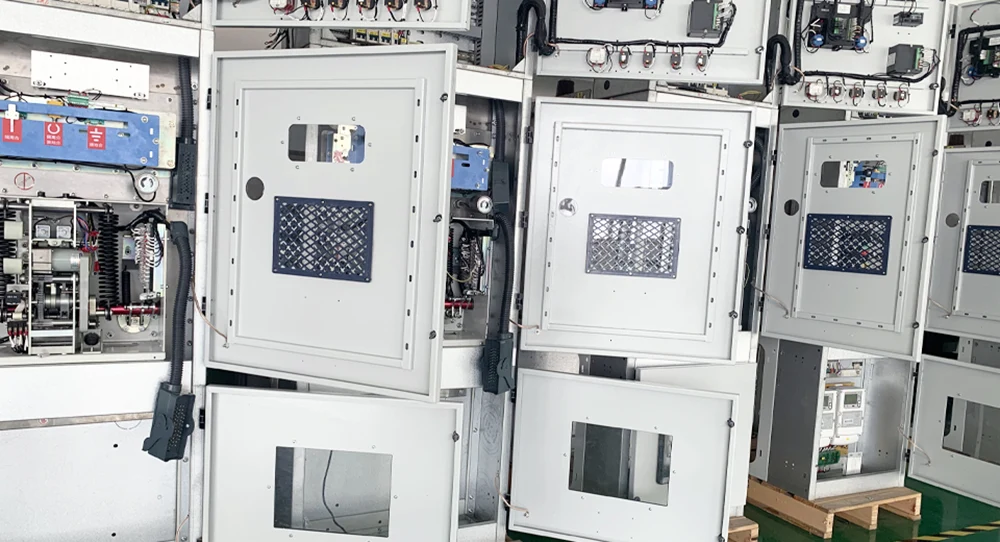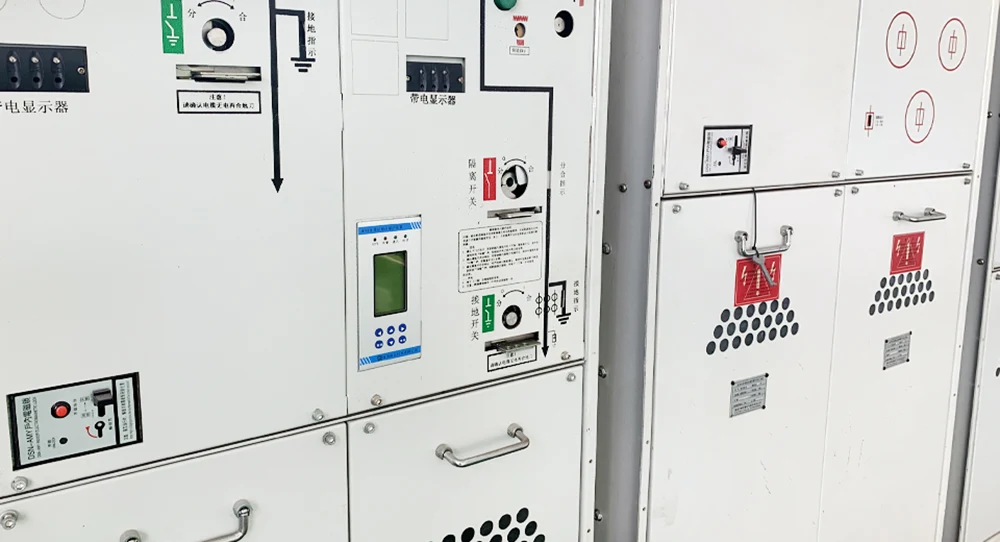Types, Common Faults, and Analysis of High-Voltage Switchgear
2024-01-12
High-voltage switchgear plays a critical role in electrical power systems, and the degradation of switchgear operation is one of the causes of system faults. This article explores the types, common faults, and analysis of high-voltage switchgear. It covers indoor and outdoor configurations, fixed and detachable types, and highlights the development of central switchgear in recent years. The main focus is on analyzing faults related to insulation, conduction, and mechanics, including sticking and misoperation, switch malfunctions, insulation failures, overload faults, and external factors. Understanding these common faults is crucial for ensuring the safe operation and maintenance of high-voltage switchgear..
High-voltage switchgear is an essential electrical equipment in power systems. It is responsible for controlling, protecting, and isolating power distribution networks. The operational deterioration of switchgear can lead to system failures, emphasizing the need to identify and analyze common faults. This article provides an overview of the types, common faults, and analysis of high-voltage switchgear to enhance the understanding of these critical components..
Types of High-Voltage Switchgear: High-voltage switchgear can be classified as indoor or outdoor configurations. Switchgear with voltage levels below 10KV is usually designed for indoor installation. Depending on the primary line scheme, switchgear can be categorized as incoming/outgoing line switchgear, busbar sectionalizing switchgear, and others. 10KV switchgear typically houses oil or vacuum circuit breakers. The operational mechanisms for these circuit breakers can include spring, electromagnetic, manual, or permanent magnet mechanisms. The variation in switchgear structures affects the selection and installation of sensors.
Fixed and Detachable Types: The usage of high-voltage switchgear can be further classified as fixed or detachable types. Historically, power plants used detachable switchgear for their electrical systems, while fixed switchgear was commonly employed in power supply systems. However, with technological advancements and successful product developments, there has been a shift in these conventional practices. Metal-clad detachable switchgear has been developed based on fixed switchgear concepts. Metal-clad switchgear features a fully enclosed structure, with separate compartments for various functionalities, improved operational and safety performance, easy maintenance, and enhanced reliability.
Development of High-Voltage Switchgear: In recent years, the rapid development of miniature vacuum circuit breakers has led to the emergence of central switchgear as a new and highly sought-after solution. Central switchgear offers several advantages, such as miniaturization of carriage systems and mechanization of the production process, resulting in more accurate production of carriages and guide rails. Many manufacturers now produce products, including the main circuit breaker and cabinet, that do not require one-to-one factory debugging. Successful on-site commissioning is facilitated, ensuring flexibility and convenience in carriage operation. The reliable product interchangeability is minimally affected by ground level conditions. Metal-clad switchgear operates safely and reliably while being easy to maintain. Consequently, an increasing number of power supply systems are adopting this solution.

Common Faults and Fault Analysis:
1.Sticking and Misoperation Faults: Sticking and misoperation faults are the primary faults in high-voltage switchgear. They can be categorized into two types: mechanical faults caused by operational mechanisms and transmission systems, and electrical faults caused by control circuits and auxiliary circuits. Mechanical faults manifest as stiff mechanisms, component deformations, displacements or damages, loose switch cores, stuck shafts, disengagement faults, etc. Electrical faults include poor secondary wiring connections, loose terminals, wiring errors, malfunction or burnout of switching or auxiliary switches, faults in operating power supplies, switch contactors, microswitches, and more. Ensuring proper inspection and maintenance of these areas is essential to prevent sticking and misoperation faults.
2.Switch Malfunction Faults: Switch malfunctions are faults caused by the circuit breaker itself. For oil circuit breakers, common manifestations include oil spray short circuits, damage to the arcing chamber, insufficient opening capabilities, explosions during closing, etc. Vacuum circuit breakers may exhibit faults such as leaks in the arcing chamber and bellows, reduced vacuum levels, reignition of capacitor banks upon disconnection, fracture of ceramic tubes, and more.
3.Insulation Faults: Insulation faults can occur due to various reasons, including the voltage levels (operational and transient), voltage limiting measures, and insulation strength relationship. The aim is to ensure products are both safe and cost-effective, achieving optimal economic benefits. Insulation faults primarily manifest as external flashovers, internal flashovers, phase-to-phase flashovers, lightning overvoltage flashovers, flashovers in porcelain bushings or capacitor bushings, dirty flashovers, breakdowns, explosions, flashovers on raising or lowering rods, flashovers or breakdowns in current transformers (CTs), explosions, fractures of porcelain bottles, etc. Proper insulation design and regular maintenance are crucial to prevent insulation faults.
4 Overload Faults: Overload faults at the voltage levels of 72-12KV are primarily caused by poor contact between the isolating plugs in the switch cabinet, resulting in the melting or burning of contacts.
5 External Factors Faults: External factors and unexpected faults encompass incidents such as impacts from foreign objects, natural disasters, short circuits caused by small animals, and more. Safeguarding switchgear against such occurrences is necessary to ensure uninterrupted power supply and system safety.

Conclusion High-voltage switchgear is a crucial component in electrical power systems. Understanding the types, common faults, and fault analysis of switchgear is vital for ensuring safe and reliable system operation. This article highlighted the indoor/outdoor and fixed/detachable configurations of switchgear, as well as the emerging trends in central switchgear. Additionally, it discussed common faults related to sticking and misoperation, switch malfunctions, insulation, overload, and external factors. Adequate maintenance, inspection, and preventive measures are necessary to minimize faults, enhance operational efficiency, and safeguard power systems.





